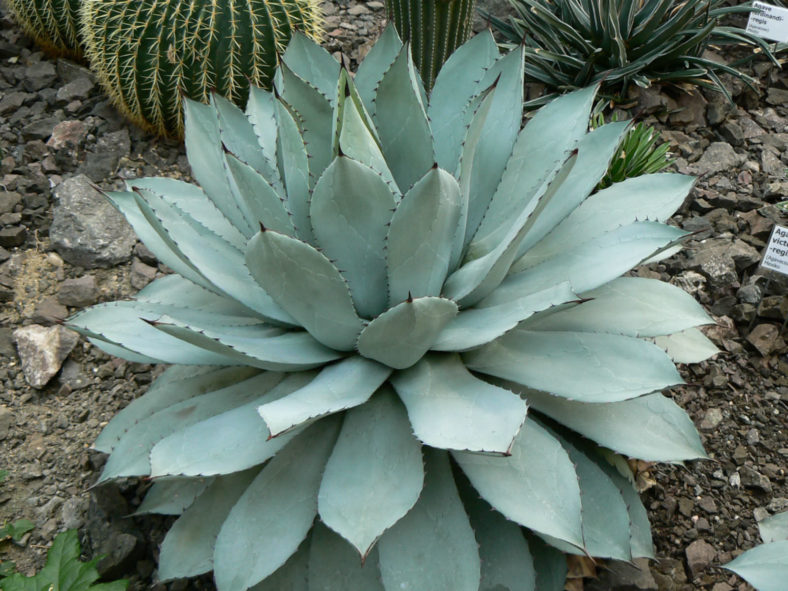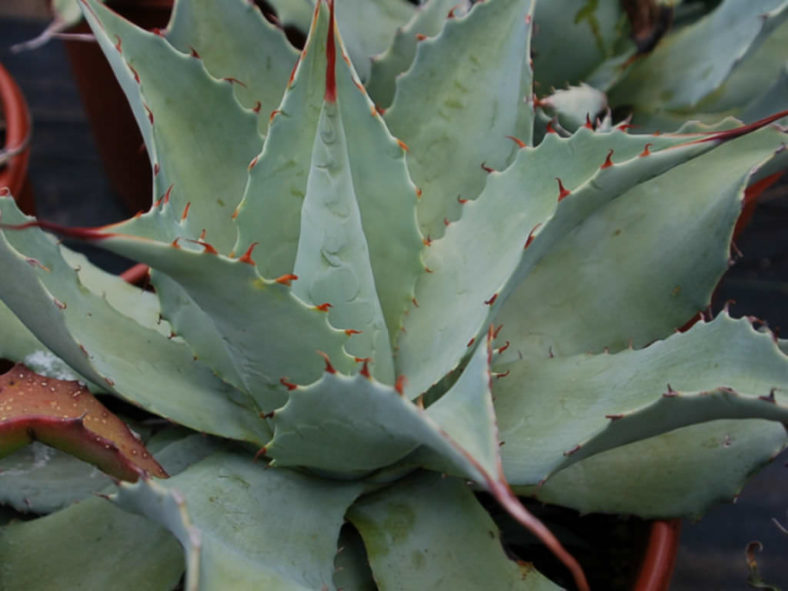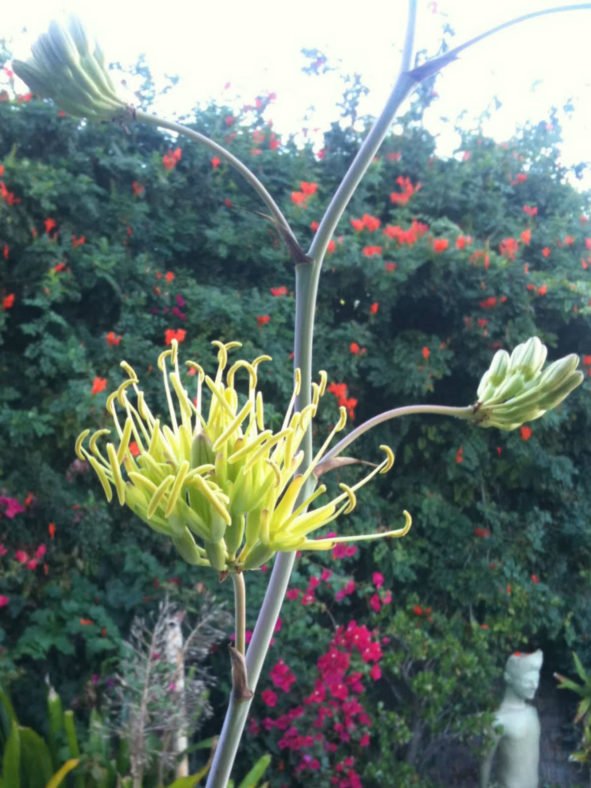Scientific Name
Agave potatorum Zucc.
Common Name(s)
Butterfly Agave
Synonym(s)
Agave amoena, Agave auricantha, Agave elegans, Agave latifolia, Agave pulchra, Agave quadrata, Agave saundersii, Agave schnittspahnii, Agave scolymus, Agave verschaffeltii
Scientific Classification
Family: Asparagaceae
Subfamily: Agavoideae
Genus: Agave
Etymology
The specific epithet "potatorum" (pronounced "potatorum") means "drinker, tippler" and refers to the use of this species in producing a high-quality mezcal with elegant flavors and aromas.
Origin
Agave potatorum is native to the semi-desert areas of Mexico from Puebla south to Oaxaca.
Description
Agave potatorum is an attractive succulent that forms symmetrical rosettes of broad, glaucous blue-gray leaves with short, reddish-brown marginal spines on the tubercle-like prominences and a longer, often somewhat wavy terminal spine. The rosettes can grow up to 2 feet (60 cm) tall and 3 feet (90 cm) in diameter, solitary or slowly clumping. The leaves are slightly reflexed back near the tips and can measure up to 18 inches (45 cm) in length. The terminal spine can grow up to 1 inch (2.5 cm) long.
The mature rosette produces a flower spike that can reach 20 feet (6 m) in height when fully developed and bears pale green or yellow flowers tinged with red and subtended with red bracts.
Varieties and Cultivars
- Agave potatorum var. verschaffeltii
- Agave potatorum 'Cameron Blue'
- Agave potatorum 'Cubic'
- Agave potatorum' Eye Scream'
- Agave potatorum 'Shoji-Raijin'
- Agave potatorum 'Snowfall'

Hardiness
USDA hardiness zone 9b to 11b: from 25°F (-3.9°C) to 50°F (10°C).
How to Grow and Care
Agave is not a difficult plant to grow. They're slow-growing and dramatic and will even thrive on a bit of neglect. If you're the type of person who likes to fuss with houseplants and water a lot, Agave is probably not the plant for you. On the other hand, if you're the type of person who likes to set it and forget it, and you have a sunny window, Agave might be the way to go. Be aware that some large varieties will eventually outgrow your room (unless you have a large greenhouse), and Agave can be aggressive. They have irritating sap and sometimes very sharp thorns that can cause injuries to small children and even pets.
In general, Agaves do not need to be repotted every year. Most species commonly found in cultivation grow slowly and take a long time to outgrow their pot. It's also best to handle your Agave as little as possible since they dislike being disturbed. When you repot, refresh the spent soil with a new potting mix and ensure the plant is firmly anchored in its pot.
See more at How to Grow and Care for Agave.
Links
- Back to genus Agave
- Succupedia: Browse succulents by Scientific Name, Common Name, Genus, Family, USDA Hardiness Zone, Origin, or cacti by Genus
Photo Gallery
Click on a photo to see a larger version.

